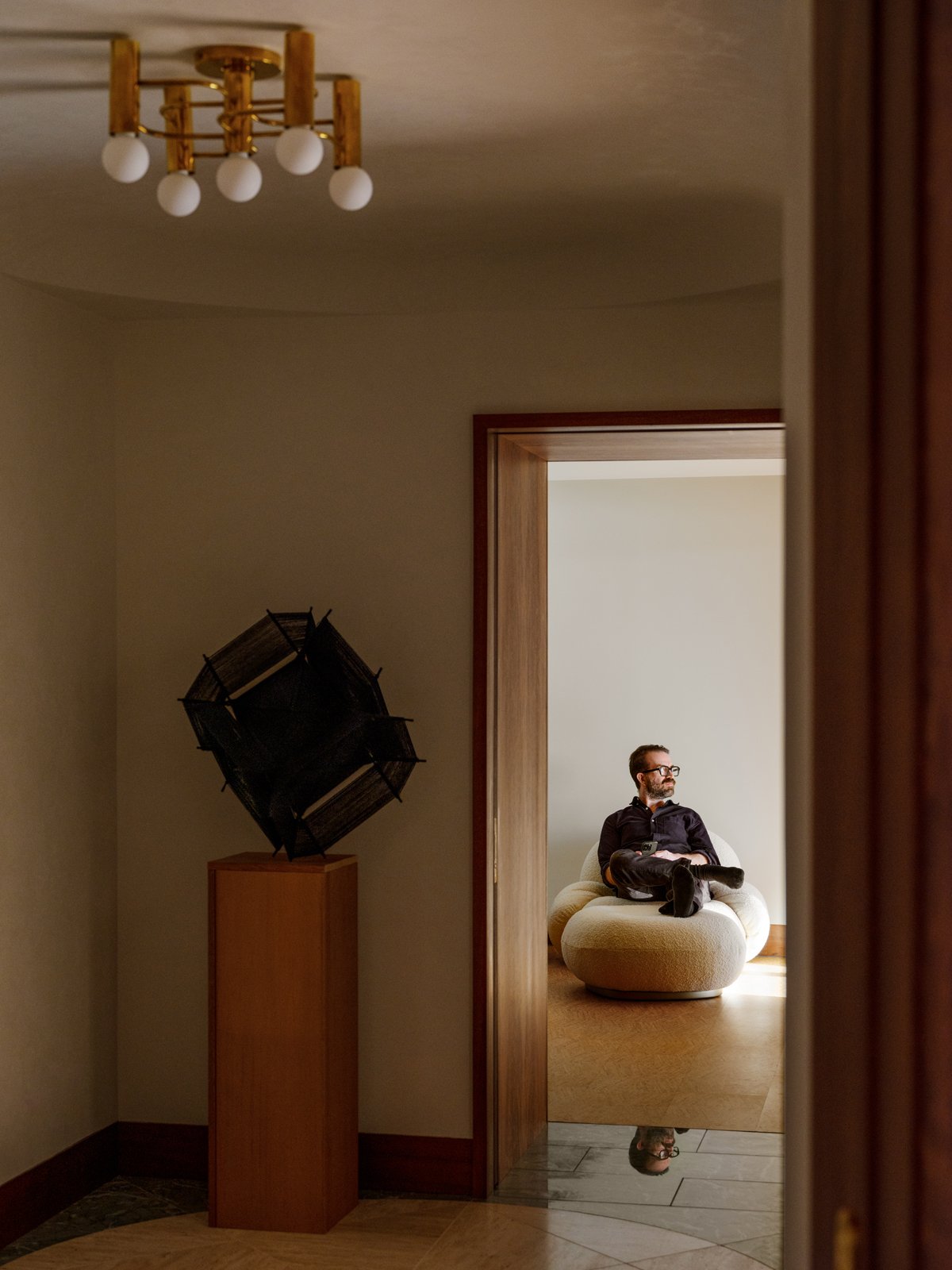Inside a Watergate Complex Aerie With a Fresh Take on 1970s Glamour
A balance between institutional gravitas and everyday livability—as Potts describes, “toeing this line of going over the top but also giving space to breathe for someone to feel comfortable.” And that, adds the homeowner, was only achievable through teamwork and mutual respect. “Commonly, voices are steamrolled for the sake of someone’s ego,” she explains, “but here, everyone’s perspective, gifts, and hard work was honored and elevated.”
Washington, DC, Interior Designers, Architects, and Landscape Designers You Need to Know
After earning his stripes at top firms such as SHoP Architects and Bjarke Ingels Group, Nicholas G Potts brought his extensive design knowledge to his own DC firm. Potts’s command of design and architectural history is evident in his residential designs, which feel inventive and exciting yet also appropriate to the period of the home. From a modern pied-à-terre in the famed Watergate Complex to a 1920s row house brought back to its previous glory, the firm has worked with homes of many different eras, adding exquisite materials and details that nod to the residence’s original character.
Adding More Walls Was the Secret to This D.C. Apartment Renovation
“It’s not a lot of square footage, and the existing plan was fairly chaotic. So this sort of 1920s fantasy [we had] was also about articulating areas, reintroducing walls, and approaching every square inch with intention.”
This architect's apartment is a masterclass in how to make a small space feel luxe
“Acknowledging that the apartment is quite limited in floor area, we calibrated the scale of new elements (such as oversized herringbone floors) and introduced new details, such as the seamless floor-to-ceiling cove, to hide corners and trick the eye into seeing more space than is here,'”
DON’T CALL IT SAGE—THIS DC KITCHEN’S SEAFOAM CABINETS BRING THE DRAMA
Nicholas Potts wants to get something straight: History, at least as far as design is concerned, is far from boring. “There’s a popular misconception that anything having to do with history is somehow ‘safe’ and ‘proper,’ and that color was either muted or nonexistent
THIS DC KITCHEN WAS ONCE SMOOSHED UNDER THE STAIRS - NOW IT’S BATHED IN LIGHT
While Potts started thinking big-scale by shifting the whole kitchen into an entirely different room, he also thought of the smallest details, like the brass switch plates, outlet covers, and air-vent panels. “If you’re doing something that’s of a certain period, those little things make a space”
WILL CORONAVIRUS CLOSE THE OPEN CONCEPT KITCHEN?
Nicholas Potts says here is another important reason for the wall. “Walls are wonderful for storage. When you take down that wall to open things up, you’re going to have to find places to store whatever was in the shelves or cabinets that were built against that wall. Now that we all see each other 24-7, we want less togetherness. We need walls, and to be able to get some privacy from each other.”
Interior Designers Share the Home Decor Tips Everyone Should Know Before They Turn 30
“Don’t paint your ceilings white. I’m big on using a monochromatic palette creating an all-encompassing mood for a room. If you take away the white it removes the stark contrast to the walls and even bold colors are more subtle.”
Interior Designers ON THE MOST ICONIC FURNITURE OF ALL TIME
Angelo Mangiarotti’s Eros side tables are as good as it gets. You couldn’t invent anything more primitive—just two pieces of stone, held together by friction without any fasteners or attachments—but the way that the attachment is detailed makes a very basic idea into something whimsical, even sensual.
4 PANDEMIC-INSPIRED DESIGN TRENDS THAT ARE SURE TO STICK AROUND
My clients are looking for a lot more complexity and diversity in their spaces—something that a single room with everything exposed can never achieve. At the same time, I’m seeing the definition of rooms with specific functions completely melting down—we’ve all realized the need for flexibility
Photo: Jennifer Hughes








